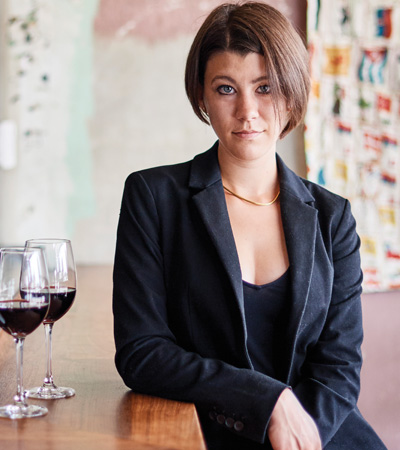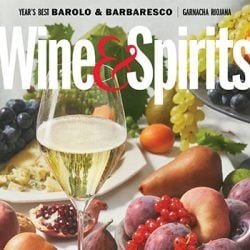When Wine & Spirits launched the Annual Restaurant Poll in the late 1980s, we asked sommeliers about their most popular wines by the glass and by the bottle. It didn’t occur to us to ask about wine-pairing flights. In the past few years, though, the tasting menu has overflowed the banks of its usual white tablecloth/Michelin-star habitat, and our poll respondents report a significant increase in demand for course-by-course wine pairings. Meanwhile, sommeliers are working to differentiate their approaches to wine pairings; there seem to be at least four current magnetic poles.
Eclectic
When Mabel Gray opened in late 2015, it became the first Detroit-area restaurant to offer a full-fledged tasting menu with wine pairings. Describing the clientele at Mabel Gray, wine director and Michigan native Rachel Van Til says, “Oftentimes they’re fairly laid back. There’s not a lot of expectation of what a tasting menu should be or what should be on it, so whimsy goes over really well.” She presents chef James Rigato’s kumquat-habanero marmalade duck wings with an off-dry chenin blanc from Domaine Huët. Or beer. Or cider. Or maybe a riesling from northern Michigan. The red snapper with puffed, crispy scales in tikka masala spices meets a tibouren from Clos Cibonne. Once the outlier, this sort of freewheeling approach is increasingly the dominant mode in restaurants from coast to coast.


At Manresa, a Silicon Valley destination, Jim Rollston, MS, is more inclined to give guests a taste of the classics. “I think part of it has to do with being an older sommelier,” he says—his days of hunting ‘every new wine possible under each rock of the world’s winegrowing areas” are mostly over. “While we don’t get to DRC or first-growth levels,” he says, “we can feature wines that guests might find in stores for $150 to $200 retail, though not for every wine on the flight.” That means wines like Dönnhoff Grosses Gewächs rieslings or Rostaing Côte-Rôtie, and older, mature reds from Napa and Barbaresco.
Two-Tier
Some sommeliers are beginning to offer two options: a standard pairing and a reserve pairing with more exalted wines. At Daniel in NYC, Raj Vaidya introduced the more rarified option six years ago— “interesting older vintages, stuff from the cellar”—and he’s since seen pairings rise from one-third to one-half of his total by-the-glass sales. The approach also gives him more opportunity to keep on top of the older wines in the cellar. “I use it to see what things are tasting like,” he says.
At Michael Mina in San Francisco, Martin Sheehan-Stross implemented a similar approach a year ago, and things the addition of a reserve pairing option was a major factor in driving a year-over-year jump in wine sales. “We poured Ruinart Blanc de Blancs with the caviar parfait,” he says. “We were pouring Auguste Clape [Cornas] with some of the bird courses.”
Regional
At Frasca in Boulder, Colorado, the food and wine have always leaned toward Friuli. Even so, says sommelier Carlin Carr, the interconnections have intensified since chef Lachlan Mackinnon-Patterson introduced the option of a traditional Friulian set menu three years ago. It seemed natural, she says, to offer the region’s wines with the region’s food. Now, around 25 percent of guests order the menu and pairings: Malvasia Istriana with pesce crudo and fritti misti; skin-macerated whites, like Movia’s ribolla gialla, with polenta and pork cotechino. “It gives those wines context,” she says.
Talk to Roger Dagorn, MS, at Tocqueville in NYC, and he’ll tell you that the pairing trend has been a long time coming. He began serving wine at his family’s Le Pont Neuf restaurant in 1966. Three Thursdays a month, the restaurant hosted wine dinners featuring five or six courses of regional French food matched with glasses of the region’s wine: one week Alsace, the next week the Rhône or Burgundy. “We were certainly one of the first ones in New York to be doing that,” he says. “I followed a fairly classic model: white before red, good before great, young before old, dry before sweet.”
Soon, Dagorn himself became one of the form’s early American innovators. By the 1990s, he was overseeing ten-course dinners paired with ten different wines—rice wines, that is. Sake pairings had arrived.
This story was featured in W&S April 2017.
Longtime senior editor at Wine & Spirits magazine, Luke now works for the Stanford Technology Ventures Program.
This story appears in the print issue of April 2017.
Like what you read? Subscribe today.

















